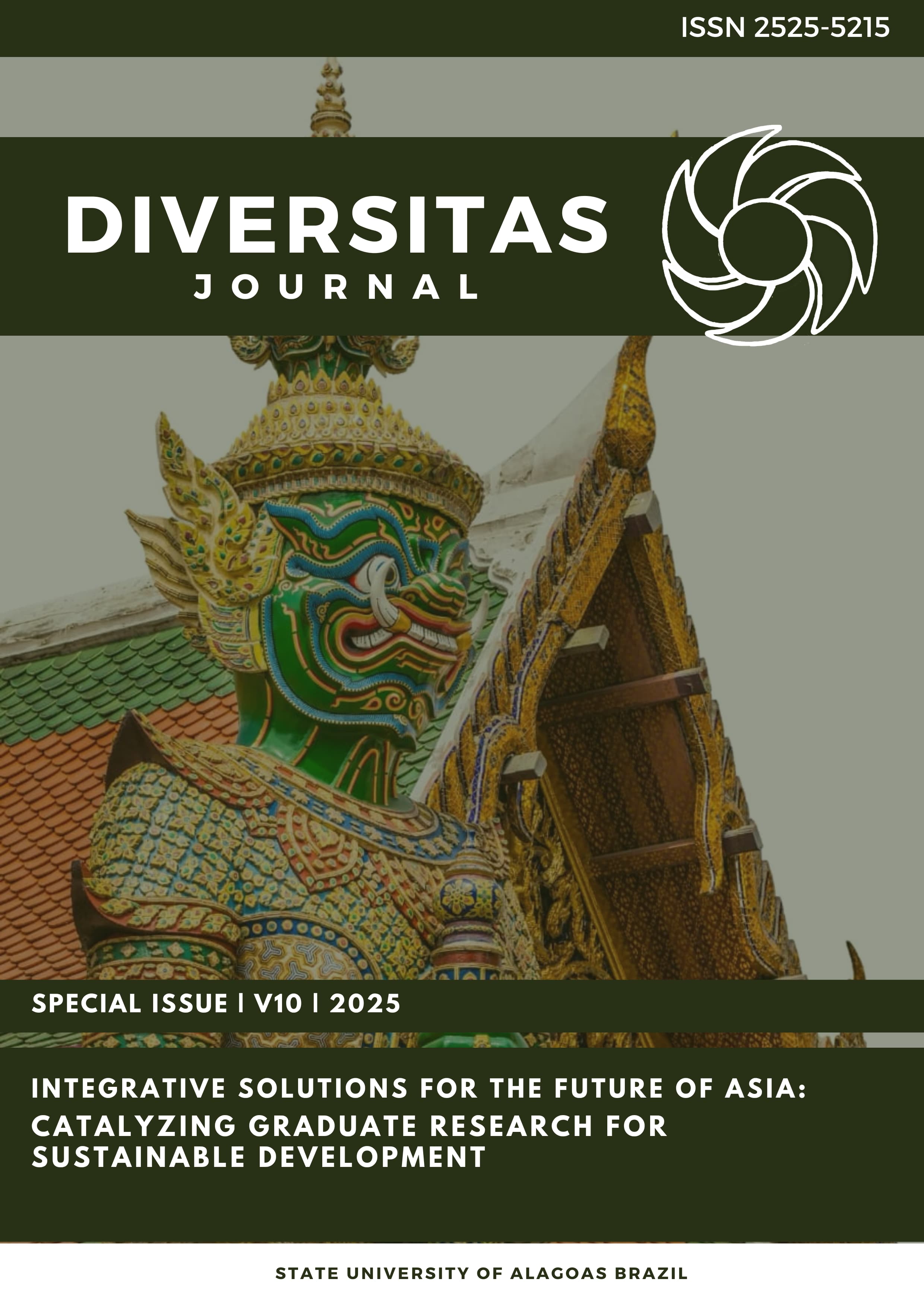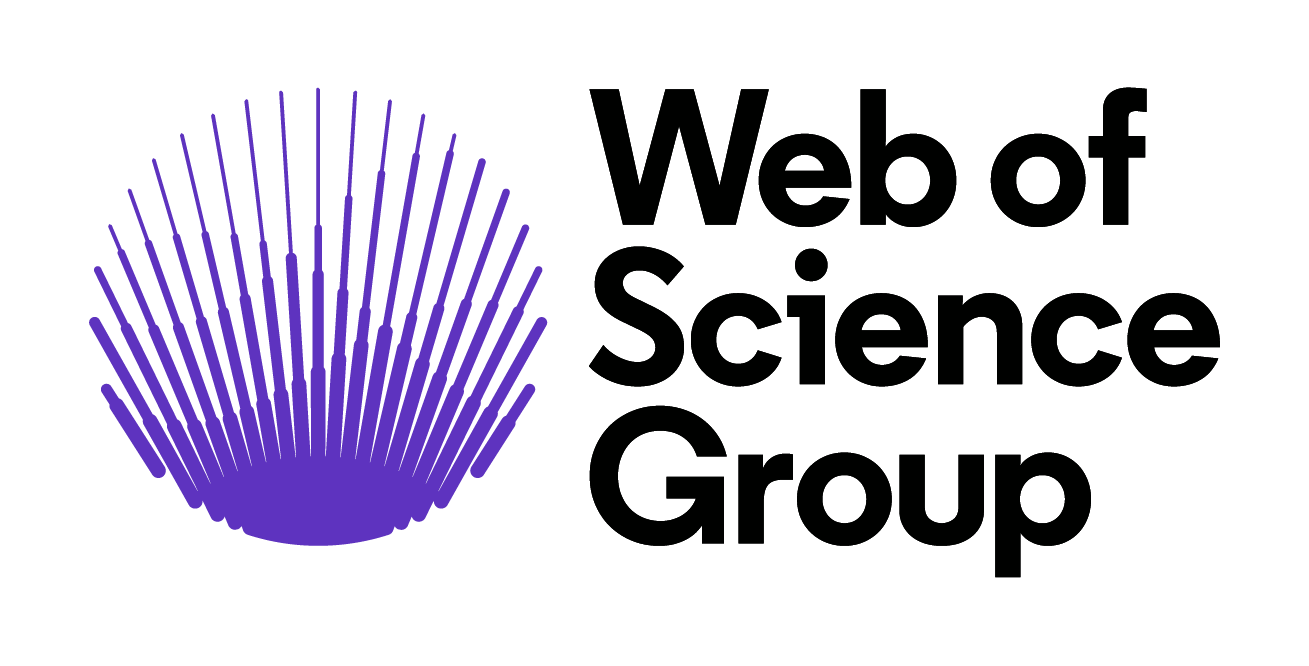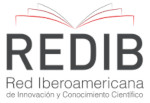Evaluating the adoption of agile project management practices in Chinese technology companies: Risk management implications
DOI:
https://doi.org/10.48017/dj.v10ispecial_1.3284Keywords:
agile project management, chinese technology, risk management, cultural adaptation, mixed-methodAbstract
This research explores on the results of a mixed-methods study conducted to explore the adoption of Agile Project Management (APM) practices and associated risk management implications in China manufacturing companies. Without repeating the detailed list of research questions, it is helpful to recall that our study sought to explore what leads tech firms in China towards adopting APM practices, as well as risk mitigation strategies; and how such risk management could be integrated successfully into a broader strategic framework in the technology sector within the Chinese context. The research used a survey of 223 employees in Jiangxi Province, China in 10 technology companies coupled with qualitative interviews and focus groups. Our quantitative analysis consisted of descriptive statistics, ANOVA and regression analysis while for the qualitative data we used thematic analysis. The survey showed strong adoption of APM practices, as well as the keys to success: Culture, Bi-modal approach and Benchmarking rated "Often Adopted." Nevertheless, wide differences in adoption and risk management practices were identified among different organizational roles: senior management and Scrum Masters displayed higher rates than some other roles. The strongest factor predicting risk mitigation practices in relation to individual characteristics was environmental factors, that were followed by organizational and cultural factors. The study provided insight into some of the challenges faced in tailoring APM to suit Chinese organizational culture, especially in aligning agile principles with top-down and hierarchical governance frameworks. It reinforced for me the need to have a real physical workspace designed in an agile way and supported by technology. Based on these findings, a strategic framework was developed for integrating APM and risk management, emphasizing organizational alignment, cultural adaptation, continuous learning, and environmental responsiveness. The study contributes to the understanding of APM adoption in culturally distinct business environments and offers practical insights for technology companies in China seeking to enhance their agile practices and risk management strategiesMetrics
References
Agile Alliance. (2021). Agile Glossary. Retrieved from https://www.agilealliance.org/agile101/
Alqudah, M., & Razali, R. (2016). A review of scaling agile methods in large software development. International Journal on Advanced Science, Engineering and Information Technology, 6(6), 828-837.
Anderson, D. J. (2010). Kanban: Successful Evolutionary Change for Your Technology Business. Blue Hole Press.
Beck, K., Beedle, M., van Bennekum, A., Cockburn, A., Cunningham, W., Fowler, M., ... & Kern, J. (2001). Manifesto for Agile Software Development.
Boehm, B., & Turner, R. (2003). Balancing Agility and Discipline: A Guide for the Perplexed.
Chen, J., Zhao, X., & Lewis, M. (2019). A case study of agile interaction design practices for media industry in China. Applied Sciences, 9(14), 2880.
Chen, Y., Wang, J., & Cheng, J. (2017). The influence of cultural factors on risk management in Chinese software projects. Journal of Software: Evolution and Process, 29(6), e1872.
Chen, Y., & Lee, J. (2019). Agile software development in China: A cultural perspective. International Journal of Information Technology and Management, 18(2), 154-172.
Creswell, J.W., & Plano Clark, V.L. (2011). Designing and Conducting Mixed Methods Research.
Conforto, E. C., et al. (2014). Agile project management and its impact on risk management.
Crispin, L., & Gregory, J. (2009). Agile testing: A practical guide for testers and agile teams. Addison-Wesley Professional.
Dikert, K., Paasivaara, M., & Lassenius, C. (2016). Challenges and success factors for large-scale agile transformations: A systematic literature review. Journal of Systems and Software, 119, 87-108.
Drury-Grogan, M. L. (2014). Performance and continuous improvement: The impact of agile practices on project performance. International Journal of Project Management, 32(7), 1144-1153.
DeCarlo, D. (2004). Risk Management in Agile Projects.
Gao, L., & Chen, X. (2018). Agile practices in Alibaba's Taobao team: A case study. Proceedings of the 2018 International Conference on Software Engineering and Knowledge Engineering (SEKE), 463-468.
Ghobadi, S., & Mathiassen, L. (2017). Risks to effective knowledge sharing in agile software teams: A model for assessing and mitigating risks. Information Systems Journal, 27(6), 699-731.
Gren, L., Torkar, R., & Feldt, R. (2015). The prospects of a quantitative measurement of agility: A validation study on an agile maturity model. Journal of Systems and Software, 107, 38-49.
Guo, J., Qiu, J., & Cheng, L. (2019). A hybrid risk management approach for agile software development in a large Chinese company. Journal of Software Engineering and Applications, 12(7), 283-298.
Highsmith, J. (2009). Agile Project Management: Creating Innovative Products. Addison-Wesley Professional.
Hobbs, B., & Petit, Y. (2017). Agile methods on large projects in large organizations. Project Management Journal, 48(3), 3-19.
Hoda, R., & Murugesan, L. K. (2016). Multi-level agile project management challenges: A self-organizing team perspective. Journal of Systems and Software, 117, 245-257.
Kaisti, M., Mujunen, T., Mäkilä, T., Rantala, V., & Lehtonen, T. (2016). Adapting the scaled agile framework for tailoring large-scale agile development. Proceedings of the 10th ACM/IEEE International Symposium on Empirical Software Engineering and Measurement.
Kropp, M., Meier, A., & Biddle, R. (2016). The role of shared understanding in distributed agile development. Proceedings of the XP2016 Scientific Workshops.
Lu, Y., & Zhao, Y. (2014). Challenges of Agile practices in China.
Leffingwell, D. (2010). Agile software requirements: Lean requirements practices for teams, programs, and the enterprise. Addison-Wesley Professional.
Liang, T., & Yao, J. (2018). Agile transformation in Chinese tech giants: Challenges and strategies. Journal of Software Engineering and Applications, 11(6), 291-304.
Liu, H., & Wang, Y. (2020). Benefits and challenges of agile management in Chinese software companies. Journal of Systems and Software, 161, 110488.
Liu, X., & Wu, J. (2018). Risk management practices in Chinese technology companies. International Journal of Project Management, 36(3), 533-548.
Moe, N. B., Dingsøyr, T., & Kvangardsnes, O. (2019). Understanding shared leadership in agile development: A case study. Proceedings of the 52nd Hawaii International Conference on System Sciences.
Moe, N. B., Aurum, A., & Dybå, T. (2018). Challenges of shared decision-making: A multiple case study of agile software development. Information and Software Technology, 25, 94-108.
Neely, S., & Stolt, S. (2013). Continuous delivery? Easy! Just change everything (well, maybe it is not that easy). Proceedings of the 2013 Agile Conference, 121-128.
Paasivaara, M., Behm, B., Lassenius, C., & Hallikainen, M. (2018). Large-scale agile transformation at Ericsson: A case study. Empirical Software Engineering, 23(5), 2550-2596.
Petersen, K. (2011). Measuring and predicting software productivity: A systematic map and review. Information and Software Technology, 53(4), 317-343.
Poppendieck, M., & Poppendieck, T. (2003). Lean software development: An agile toolkit. Addison-Wesley Professional.
Persson, J. S., Mathiassen, L., Boeg, J., Madsen, T. S., & Steinson, F. (2012). Managing risks in distributed software projects: An integrative framework. IEEE Transactions on Engineering Management, 56(3), 508-532.
Racheva, Z., et al. (2010). Agile Requirements Prioritization in Large-Scale Outsourced System Projects: An Empirical Study.
Rodríguez, P., Partanen, J., Kuvaja, P., & Oivo, M. (2014). Combining lean thinking and agile methods for software development: A case study of a Finnish provider of wireless embedded systems. Proceedings of the 47th Hawaii International Conference on System Sciences, 4770-4779.
Sutherland, J., & Schwaber, K. (2020). The Scrum Guide.
Solinski, A., & Petersen, K. (2016). Prioritizing agile benefits and limitations in relation to practice usage. Software Quality Journal, 24(2), 447-482.
Sommer, A. F., Hedegaard, C., Dukovska-Popovska, I., & Steger-Jensen, K. (2015). Improved product development performance through Agile/Stage-Gate hybrids: The next-generation Stage-Gate process? Research-Technology Management, 58(1), 34-45.
Stake, R. E. (1995). The art of case study research. Sage.
Tan, C., & Zhao, Y. (2003). Agile practices in Chinese tech companies.
Stray, V., Moe, N. B., & Hoda, R. (2018). Autonomous agile teams: Challenges and future directions for research. Proceedings of the 19th International Conference on Agile Software Development.
Stray, V., Sjøberg, D. I., & Dybå, T. (2016). The daily stand-up meeting: A grounded theory study. Journal of Systems and Software, 114, 101-124.
Tan, F. B., & Teo, H. H. (2007). Cultural influences on organizational IT adoption: An empirical study. PACIS 2007 Proceedings, 47.
Tashakkori, A., & Teddlie, C. (2003). Handbook of Mixed Methods in Social & Behavioral Research.
Tavares, B. G., da Silva, C. E. S., & de Souza, A. D. (2019). Risk management in agile projects: A systematic literature review. International Journal of Software Engineering and Knowledge Engineering, 29(1), 79-106.
Tessem, B. (2014). Individual empowerment of agile and non-agile software developers in small teams. Information and Software Technology, 56(8), 873-889.
Tripp, J. F., Riemenschneider, C., & Thatcher, J. B. (2016). Job satisfaction in agile development teams: Agile development as work redesign. Journal of the Association for Information Systems, 17(4), 267-307.
Uludag, Ö., Kleehaus, M., Caprano, C., & Matthes, F. (2018). Identifying and structuring challenges in large-scale agile development: A multiple-case study. Proceedings of the 21st International Enterprise Distributed Object Computing Conference.
Wang, X., Conboy, K., & Cawley, O. (2015). Agile software development in China: A state-of-the-art review. International Journal of Software Engineering and Knowledge Engineering, 25(9-10), 1353-1372.
Wu, Y., & Wang, J. (2016). Adapting agile practices to Chinese cultural contexts: A multiple case study. Proceedings of the 2016 International Conference on Software and System Process (ICSSP), 38-47.
Xu, P., & Xu, D. (2016). Agile software development in China: An exploratory study. International Journal of Enterprise Information Systems, 12(1), 1-18.
Xu, X., & Shen, Y. (2014). Risk management in Chinese agile software projects. Journal of Software, 9(4), 873-882.
Yin, R. K. (2018). Case study research and applications: Design and methods (6th ed.). Sage.
Zhang, Y., & Tan, B. C. (2021). Agile software development with Chinese cultural perspectives: A case study. Journal of Global Information Management, 29(1), 1-22.
Zhao, Y., & Zhang, X. (2017). Challenges and strategies of adopting agile methods in Chinese software organizations. Proceedings of the 2017 IEEE/ACM 10th International Workshop on Cooperative and Human Aspects of Software Engineering (CHASE), 61-64.
Zheng, Y., Venters, W., & Cornford, T. (2020). Agile practices and terminologies in China: An exploratory study. Information Systems Journal, 30(5), 743-774.
Zhu, L., & Li, M. (2019). Agile transformation at Huawei: A case study. Proceedings of the 2019 IEEE/ACM International Conference on Software and System Processes (ICSSP), 134-143.
Schneider, S., Lembke, G., & Urbach, N. (2015). Agile Development in IT Offshoring Projects: An Analysis of Challenges and Success Factors. Information and Software Technology, 62, 11-19.
Nerur, S., Mahapatra, R., & Mangalaraj, G. (2005). Challenges of migrating to agile methodologies. Communications of the ACM, 48(5), 72-78.
Li, H., & Chen, L. (2016). Regional development policy and firm innovation in China. China Economic Review, 41, 138-154.
Noll, J., Abdur, R., Bass, J., & Beecham, S. (2017). A Study of the Scrum Master's Role. Conference: International Conference on Product - Focused Software Process Improvement. DOI:10.1007/978-3-319-69926-4 22
Liu, K., & Racherla, U.(2019). Innovation, Economic Development, and Intellectual Property in India and China. ARCIALA Series on Intellectual Assets and Law in Asia. https://doi.org/10.1007/978-981-13-8102-7
Tripp, J. & Armstrong, D. (2016). Agile Methodologies: Organizational Adoption Motives, Tailoring, and Performance, Journal of Computer Information Systems. DOI:10.1080/08874417.2016.1220240
Erikkson, J. (2015). Analyzing Potential Barriers of Agile Adoption in Chinese Software Development Organizations. Degree Project in Computer Science, Second Level, Stockholm, Sweden.
Surendra, N., & Nazir, S. (2018). Agile Development: Exploring What Practitioners Want to Know. Journal if Software Engineering and Applications, 11 (1).DOI: 10.4236/jsea.2018.111001
Downloads
Published
How to Cite
Issue
Section
License
Copyright (c) 2025 Lei Cheng

This work is licensed under a Creative Commons Attribution 4.0 International License.
The Diversitas Journal expresses that the articles are the sole responsibility of the Authors, who are familiar with Brazilian and international legislation.
Articles are peer-reviewed and care should be taken to warn of the possible incidence of plagiarism. However, plagiarism is an indisputable action by the authors.
The violation of copyright is a crime, provided for in article 184 of the Brazilian Penal Code: “Art. 184 Violating copyright and related rights: Penalty - detention, from 3 (three) months to 1 (one) year, or fine. § 1 If the violation consists of total or partial reproduction, for the purpose of direct or indirect profit, by any means or process, of intellectual work, interpretation, performance or phonogram, without the express authorization of the author, the performer, the producer , as the case may be, or whoever represents them: Penalty - imprisonment, from 2 (two) to 4 (four) years, and a fine. ”


















